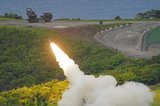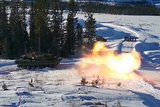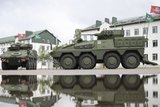Lithuania requests Javelin FMS
The US state department is considering a potential foreign military sale (FMS) to Lithuania for Javelin missiles and command launch units, related equipment and support, it was announced on 18 December.
If it goes ahead the value of the FMS is estimated at $55 million.
Lithuania has requested the equipment to enhance its abilities to defend its borders and more effectively coordinate regional border security with its Baltic neighbours. It will also allow the Lithuanian military to better contribute to NATO operations.
Lithuania has requested ten Javelin fly-to-buy missiles, 220 Javelin missiles, and 74 Javelin Command Launch Units (CLU). US government technical assistance, above the line transportation costs, and other related elements of logistics and programme support have also been requested.
The Raytheon-Lockheed Martin Javelin joint venture of Orlando, Florida, will be the prime contractor should the sale go ahead.
More from Land Warfare
-
Germany signs multi-billion-dollar deals for 6x6 CAVS and GDELS Eagle vehicles
The order is a further boost for the Common Armoured Vehicles System programme which has notched notable successes in the past 12 months. The first vehicle, made in Finland, will be delivered next year with local production expected to ramp up in 2027.
-
![Rheinmetall and KNDS tank tie-up narrows trans-European options]()
Rheinmetall and KNDS tank tie-up narrows trans-European options
The French and German governments signed an agreement in June 2018 to cooperate on the development of a new main battle tank under the Main Ground Combat System programme but the effort has struggled. This new agreement may damage it further.
-
![Hungary set to begin using Hero 400 loitering munitions]()
Hungary set to begin using Hero 400 loitering munitions
Developed by Israel's Uvision and with systems being sold in the thousands to multiple European NATO countries and the US, the Hero family of loitering systems is also in production in the US and Italy, the latter through Rheinmetall.
-
![Light Reconnaissance Strike – enabling a vital mission set (Studio)]()
Light Reconnaissance Strike – enabling a vital mission set (Studio)
A new system-of-systems concept will unlock digital integration of sensors and weapons for Light Forces, allowing them to shape the battlefield environment on their own terms and upgrade legacy platforms.
























